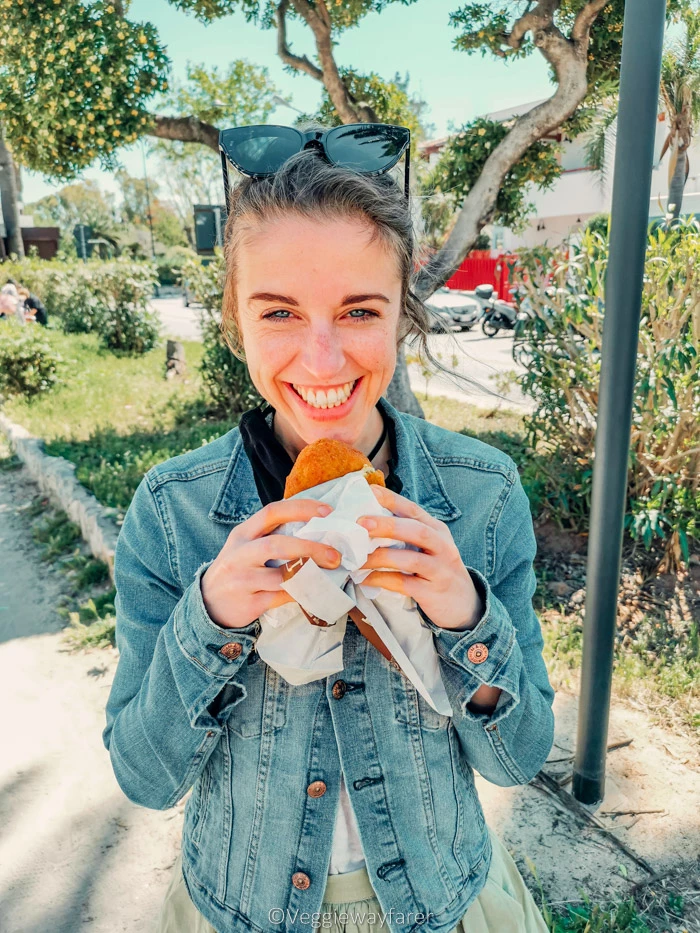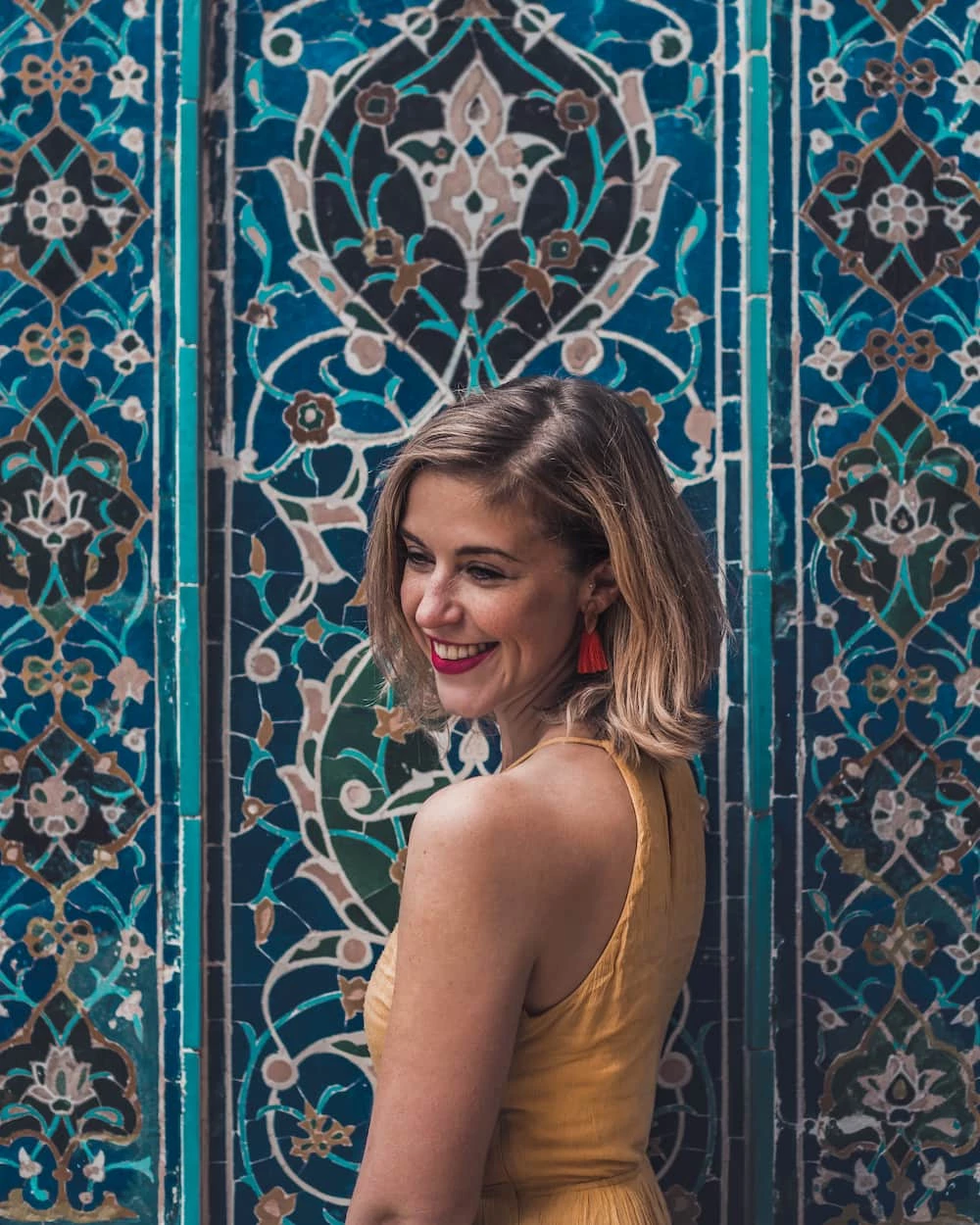Travelers looking to experience a full immersion into Bolivian culture should put the Carnival in Oruro right at the top of their list. Bedazzling devils, fluffy bears and wildly ornate feathered headdresses are but a few of the sights that await visitors.
Carnival in Bolivia is a flurry of color, beautiful costumes, parades and a neverending stream of kids spraying foam on absolutely anything that moves. In the ten days leading up to Lent period the whole country is positively brimming with celebrations.
If you happen to be in Bolivia during that time of the year, make a beeline for Oruro Carnival. This UNESCO World Heritage Festival is an interesting mixture of Andean rituals interlaced with Catholic traditions. We spent a wonderful, if slightly overwhelming, afternoon feasting our eyes on the biggest carnival celebration of Bolivia. Read on for cultural, historical and practical information to make the planning of your trip a breeze!
Please note: This post contains affiliate links, meaning I may earn a commission if you make a purchase by clicking a link (at no extra cost to you). Learn more.


The significance of Carnival in Bolivia
Every year Carnival or Carnaval in Spanish is scheduled to end on at Tuesday which is exactly 40 days before Easter also known as the Lent Period. Traditionally this is a time when Catholics abstain from eating red meat. It will therefore come as no surprise that the word Carnival (Carnaval in Spanish) is a derivative from the Latin “carne levare” or “to take away meat”.
Carnival in Bolivia is a little different from its counterpart in let’s say Tenerife or Venice. Long before Spanish settlers set foot in Bolivia, the indigenous population worshipped Pachamama (Mother Earth) with their own set of festivals and rituals. These traditions were heavily frowned upon by Catholic Priests, who however looked the other way if said rituals were performed under the guise of Catholic rituals. And thus a hybrid form of Carnival was born.
While in Bolivia, Carnival is celebrated a little differently in each region there are a few common denominators: Copious amounts of alcohol, the country virtually shuts down from Friday to Tuesday; water balloons; spray cans with foam; streamers and lavish handmade costumes.
Read More: 10 Vibrant Carnival Celebrations in Latin America


History of Oruro Carnival
The ancient town of Uru Uru (the pre-hispanic name of Oruro) was an important religious destination for both the Aymara and Quechua indigenous Andean populations long before the Spanish colonized the country. Large festivals were held to worship Pachamama and the ancient God Tiw, especially around the Ito festival.
In the 17th century, the worshipping of Pagan gods was outlawed by the Spanish settlers. Locals however continued to worship Andean Gods, under the guise of Christian liturgy. These days Carnival is dedicated to the Catholic Virgin of the Socavón (cave), also known as the Virgin of Candelaria. Dances depict the triumph of Archangel Michael over the Devil and the Seven Cardinal Sins (Pride, greed, lust, envy, gluttony, wrath and sloth).
Outwardly this might seem like a decidedly catholic celebration, yet upon closer inspection, it soon becomes clear how much of the indigenous cultures are fused into this celebration. The festivals have the dual goal of praising the Virgin Mary of the Socavon and the evil spirits roaming the land. One of the main dances performed at the Carnival or Oruro – the diablada – stems from the traditional llama llama, a traditional dance to worship the Uru god Tiw.

How is the carnival of Oruro celebrated today?
Today the carnival celebrations in Oruro have been declared a Masterpiece of the Oral and Intangible Heritage of Humanity by UNESCO. The very reason for this is the preservation of the cultural traditions of the Bolivian Andean region for more than 500 years and the beautiful fusion of indigenous and catholic traditions into the largest Carnival in Bolivia.
So, how exactly is Carnival celebrated, what do the various dances and costumes mean and when is it worth visiting as a tourist? Time to delve headfirst into the world of sequins, streamers and ritual dances.
Useful resources to plan your visit: Website of the tourism office


Overall timeline of the Oruro Carnival

Carnival starts 10 days before Lent ending precisely 40 days before Easter. The exact timing of Easter differs each year, and as such the carnival celebrations follow suit. Make sure to check the exact date of the celebration before you book your trip to Bolivia! Here is an overview of the most important celebrations held.
- ANDEAN ANATA CELEBRATION: Thursday – Anata was originally an indigenous celebration for Pachamama to thank her for the abundant harvest. Processions are held in which hundreds of singers, dancers and musicians perform to the sound of age-old native music wearing beautiful indigenous clothing.
- TREAT OF UNCLE CHALLA: Friday – The traditional Challa is performed (see above), and at dusk, the Virgen of the Socavón is serenaded on the Main Plaza 10 de Febrero by means of performances from folk groups and bands.
- PILGRIMAGE TO SANCTUARY OF THE SOCAVON: Saturday – The main event of the Carnival in Oruro and the one you do not want to miss. A 20-hour-long parade through the streets of Oruro, the procession kicks off at 07.00 a.m with the statue of the Virgin Mary being removed from the Sanctuary and parades through town. More info on the parade in the next section.
- CARNIVAL SUNDAY: Sunday – A less formal procession takes to the streets of Oruro led by various Oruro carnival bands. The procession starts at 06.30 a.m.
- DAY OF THE DEVIL AND THE MORENO: Monday – Farewell of the dancers before the Virgin of the Socavón. Around the city you can find various groups of dancers performing choreographs. Head to the Sanctuary of the Socavón to partake.

Deep dive into the costumes and dances of Carnival

The highlight of the Oruro Carnival is without a doubt the day-long folkloric parade held on the last Saturday of Carnival. In it, over 50 groups of dancers and musicians (roughly 70.000 people) make the 4-kilometer long trek which starts in Pagador Street and ends in the Sanctuary of the Socavón. The streets are cordoned off and bleachers are set up along the full length of the route.
WHAT DO THE DANCES REPRESENT
The parade centers around the triumph of good versus evil, where Archangel Michael will ultimately defeat Lucifer himself and thus bring about prosperity for the coming year. This explains the ubiquitous devil and angel costumes found in the parade.
There are however a total of 18 different folk dances, each representing a specific event in the history of Oruro and easily recognizable via their very detailed costumes.
MOST RECOGNISABLE COSTUMES IN ORURO
Throughout the article, I have added a sprinkling of the various costumes we saw during the carnival parade to give you an idea of what to look for. If you are really interested in learning about what each of the dances and costumes represents, I highly recommend you look into hiring a local guide.
Your best bet is to get in touch with a local tourism agency, which offers packaged deals for the Oruro Carnival (we went with confort tours). Scroll down to practical information for pricing information on packaged deals.


La Diablada: The most famous of all dances. Known as the Dance of the Devils. The costumes are ornate and include horned masks, capes and boots decorated with serpents.
Jukumari: Although not technically a dance, but more of a side personality. These fluffy bears were super cute and provides entertainment for the kids.
Caporales: A wink to the Spanish settlers. Dancers represent old Spanish military guards and have a whip in their right hand and a hat in their left hand.
Llameradas: Dancers represent the shepherds of llamas, vicuñas and alpacas and the long journey they traditionally had to undertake to trade their goods.
Morenadas: Represent imported African slaves. These are some of the most intricate costumes of the whole carnival.
Tobas: These were my favorite costumes as they were so vibrant! The dance is a representation of energy. Dancers make impressive jumps to entice the public.
Other dances not mentioned above are Kallawayas, Kulluwada, Incas, Pujllay, Negritos, Waka Tokori, Tarqueada, Potolos, Doctorcitos, Kantu and Tinkos.

Practical details for attending Carnival in Oruro
When is Carnival in Bolivia?
Traditionally Carnival starts 10 days before Lent, which in turn falls 40 days before Easter.
What is the route of the carnival procession?
Pagador Street, Aroma until August 6, Bolívar Street will be resumed to La Plata, Adolfo Mier and Presidente Montes, Bolívar to Petot, Adolfo Mier, Civic Avenue “Sanjinés Vincentti”, Junín and culminating in the Sanctuary of the Socavón.
Do I need a ticket for Carnival?
That depends. You can enjoy all the festivities without a ticket, stroll through the town during the day or partake in the afterparty as dusk settles. To be able to see the procession however, you will need to purchase tickets for a seat in one of the bleachers lining the route. Trust me, the full route is completely blocked off and security guards are quick to tell you to leave if you have no ticket.
Good to know: Once you have a ticket for your seat, you cannot move on to a different set of bleachers. Your ticket is linked to that specific seat.
How to purchase Oruro Carnival tickets?
- TOUR OPERATORS – The most hassle-free way of getting a ticket to see Carnival is by purchasing either an individual ticket or a package from a local tour operator. Some of these packages include meals; tickets for seats in the bleachers and transport from and to La Paz. Many tour operators will start advertising their rates months in advance via Facebook.
- INDIVIDUAL TICKETS – If you do not want to use a tour operator there are two choices for getting your own tickets. Option one: Head over to Facebook and type “Carnaval de Oruro graderias” assuming you speak a little bit of Spanish, you should be able to find tickets here (this tip was provided by a local friend). the. Option two: You can physically head to one of the graderias (grandstands) to purchase your tickets. Be sure to head here either Thursday or Friday before the procession starts. Prices range from Bs 80 to Bs 1200 depending on where your seat is located, the closer you get to the central plaza the more expensive the seat.


What should tourists know before attending Carnival?
- ALTITUDE: Oruro is located at 3700 meters, if you do want to partake in the carnival frenzy I would highly recommend you spend a few days in La Paz first to acclimatize
- IT IS PURE CHAOS: Hundreds of thousands of people descend on the small town of Oruro turning the streets into a chaotic mess. There are dancers everywhere, kids embarking on foam wars, street vendors hawking their wares and loud parade music.
- BE MINDFUL OF YOUR VALUABLES: Inevitably wherever large crowds gather, there are pickpockets. Be very careful of your valuables at all times. Why not try and find travel buddies who can go with you to keep both an eye on yourself and your items.
- YOU WILL GET WET: Cans of foam are on sale everywhere and form an integral part of the carnival experience in Bolivia. While the dancers of the parade are strictly off-limits, anybody else is fair game. From personal experience, I can tell you that as a foreigner you will get foamed more. This is not out of malice, but because you tend to stick out more and thus form an easy target. Consider bringing a raincoat and a pair of good sunglasses to protect your eyes.
Where to stay in Oruro during Carnival?
Truth be told, there are not many accommodations in the small town of Oruro. If you can book your place to stay many (many) months in advance. Should you find yourself in a situation where you are traveling to Oruro without prior planning, your can either choose to take the last bus back to La Paz (check schedule via Busbud) or see if you can rent a room from one of the locals. The later is common practice, however will require you speak a bit of Spanish.
BOOK YOUR HOTEL IN ADVANCE: Find accommodations in Oruro


How to get to Oruro
BUS: A direct bus runs 6 times daily between La Paz and Oruro. The first bus heads out at 06.00 am and the last one is at 08.30 pm. Busses leave from the Central Bus Terminal in La Paz with the company Trans Atlas. This total ride time should be no longer than 4 hours.
This route is very popular during the Carnival season and seats book out fast. Make sure to book your tickets in advance. On a practical note, make sure to carry a little cash (2.5 Bolivianos/passenger) to pay for the Uso de Terminal (a fee charged by the terminal) before getting on the bus.
TIP: Check prices and the schedule for the buses on Busbud. Aside from heading to the bus terminal, this is the easiest way to get your tickets.

Experiencing Oruro Carnival in Bolivia, a worthwhile excursion
Getting a first-hand experience of Carnival in Oruro is absolutely worth it. The highlight of the carnival celebrations is without a doubt the parade which takes place on the last Saturday.
Many local tour companies offer package deals which oftentimes include transportation to Oruro, meals and allocated seats. The packages have the advantage of being hassle-free, however they do not tend to be very budget friendly (a few hundred US$ / person).
If packaged deals are not your jam, aim to be in Oruro by no later than the Friday before the procession to be able to purchase your own tickets for a seat in the bleachers. Be mindful that hotels tend to fill up many months in advance, so book your accommodations on time.

MORE TRAVEL RESOURCES FOR VISITING SOUTH AMERICA
Bolivia: Complete guide to Salar de Uyuni in rainy season
Bolivia: 10 Reasons why Bolivia is worth visiting
Bolivia: 15 Unmissable places to see in Bolivia
Bolivia: Practical guide to Chualluma La Paz
Bolivia: 13 Things to do in La Paz – A local’s guide to the capital of Bolivia
Argentina: Everything you need to know before planning a trip to Argentina
Argentina: Things to know before planning a trip to Patagonia
Chile: Three day Easter Island Itinerary
South America: 10 Vibrant Carnivals in Latin America
Oruro Canival Guide: Pin it










0 Comments